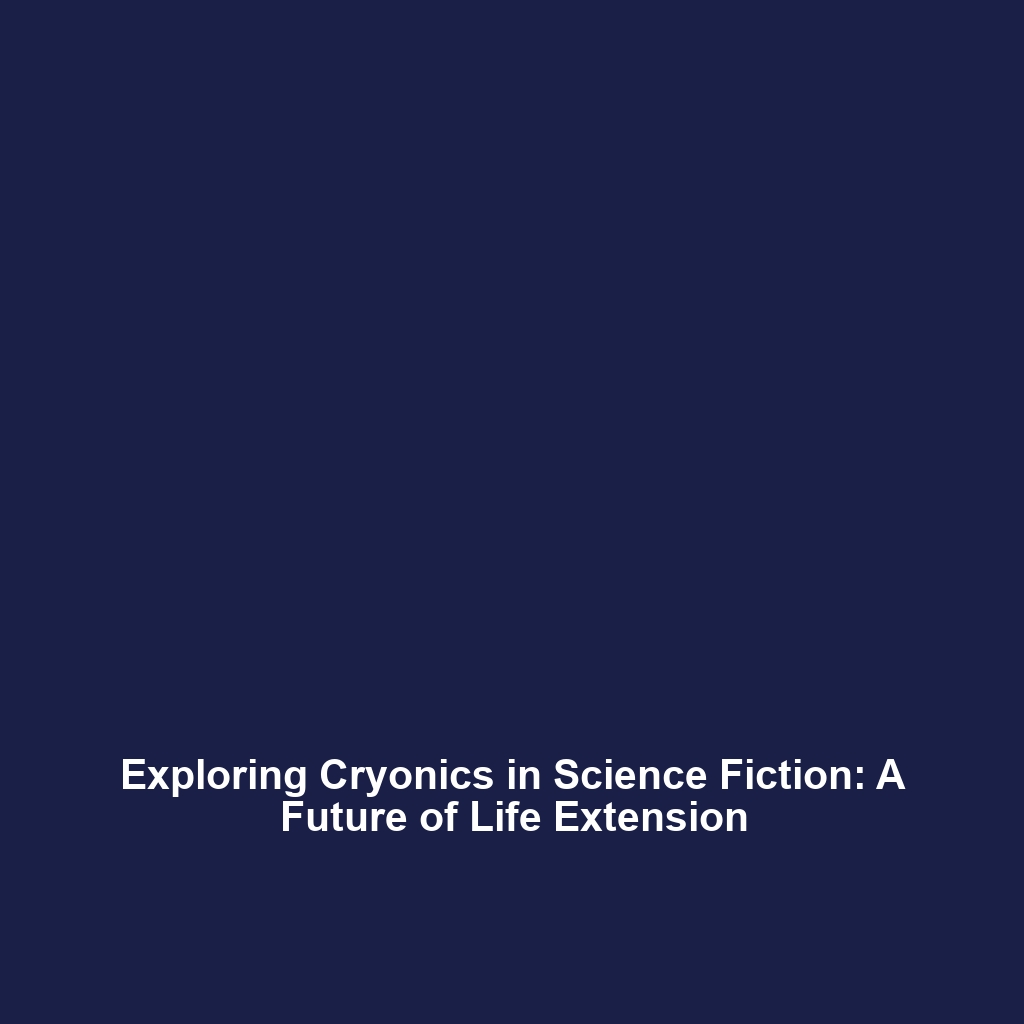Cryonics in Science Fiction: Beyond the Horizon of Life Extension
Category: Cryonics & Life Extension
Introduction
Cryonics, the practice of preserving individuals at low temperatures with the hope of future revival, has captivated the imagination of both scientists and science fiction writers alike. Within the realm of Cryonics & Life Extension, cryonics in science fiction serves as a poignant exploration of mortality, technology, and the human desire for immortality. This fascinating topic holds significant importance not only for its imaginative portrayal but also for the ethical, scientific, and technological discussions it ignites. As we delve into this narrative, we uncover the intricate connections between fact and fiction, underscoring why cryonics resonates deeply in contemporary dialogues on life extension.
Key Concepts
Cryonics in science fiction encompasses a variety of concepts and principles that align with the broader category of Cryonics & Life Extension. Below are pivotal themes commonly associated with this intriguing intersection:
Suspension of Life
The idea of suspending life processes to extend the human experience is often depicted in science fiction. Notable narratives illustrate individuals being preserved until medical science is capable of curing terminal illnesses or repairing fatal injuries. This directly relates to the foundational principle of cryonics.
Immortality and Ethics
Science fiction frequently grapples with the ethical ramifications of achieving immortality through cryonics. Themes such as societal implications, overpopulation, and the morality of playing God stem from the potential realities presented in these stories.
Applications and Real-World Uses
The portrayal of cryonics in science fiction has inspired real-world applications that mirror these imaginative scenarios. The following examples highlight how cryonics is utilized in the broader context of Cryonics & Life Extension:
- Cryopreservation Techniques: Techniques developed through scientific inquiry into cryonics have applications in organ transplantation and fertility preservation.
- Research and Development: Science fictional portrayals encourage innovations in life extension technologies, prompting real research in regenerative medicine.
- Public Awareness: Science fiction narratives raise awareness about cryonics, contributing to ongoing discussions regarding its viability and ethical considerations.
Current Challenges
Despite the allure of cryonics, various challenges and limitations persist in both its scientific study and practical application:
- Scientific Validity: The fundamental processes of freezing and later reviving complex organisms remain scientifically unproven.
- Legal and Ethical Considerations: The legal status of individuals preserved cryonically poses profound ethical dilemmas.
- Public Skepticism: A general skepticism about the effectiveness and morality of cryonics challenges its acceptance and further exploration.
Future Research and Innovations
Looking ahead, innovations in the realm of Cryonics in Science Fiction are set to redefine our understanding of life extension. Noteworthy areas of potential breakthroughs include:
- Advances in Cryoprotectants: Developing more effective cryoprotectants could enhance cellular integrity during freezing.
- Nanotechnology: Nanobots capable of repairing cellular damage may one day facilitate successful revival from cryonic suspension.
- Regenerative Medicine: Emerging techniques in stem cell research and tissue engineering could directly impact the revival processes envisioned in fiction.
Conclusion
In conclusion, cryonics in science fiction serves not only as a source of entertainment but also as a critical lens through which we can examine the very essence of human consciousness and the desire for life extension. The dialogues initiated by these narratives encourage both scientific inquiry and philosophical debate, urging us to explore the possibilities that lie ahead. To further engage in this captivating subject, readers can explore additional resources on ethical implications of cryonics or investigate latest innovations in life extension technologies.
